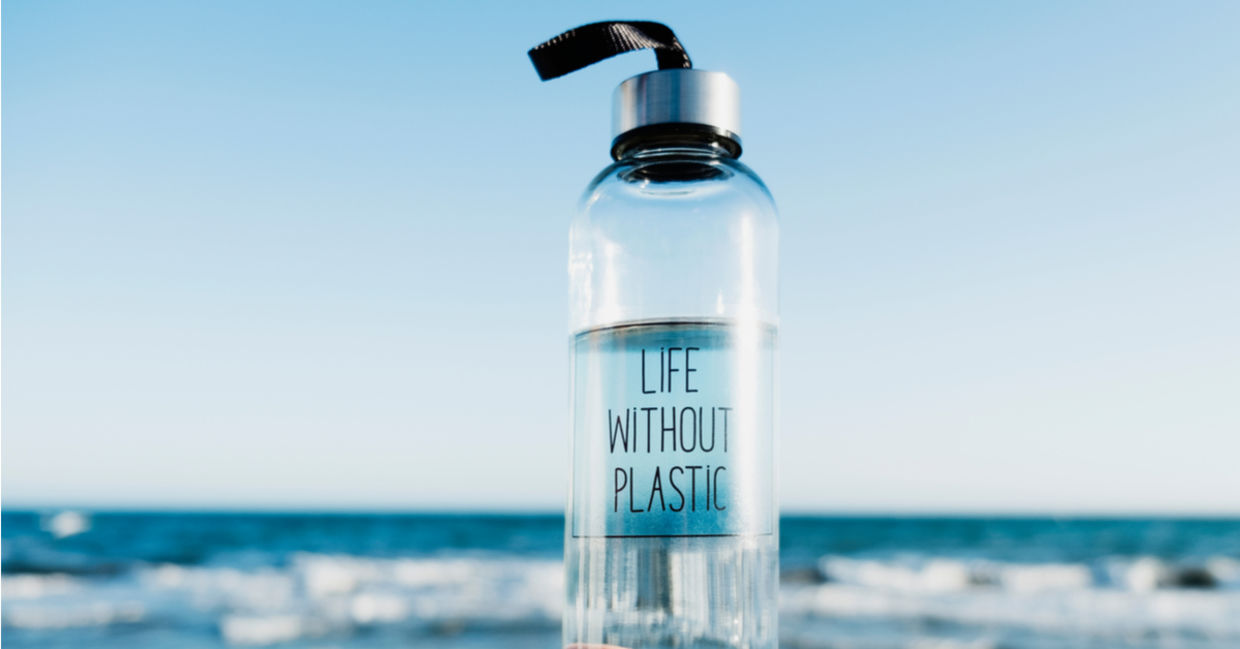
(Maridav / Shutterstock.com)
It is incredible to think that our bodies are composed of 60 percent water. In order to hydrate properly, it is recommended that women drink about 11 cups of water and men aim for 15 cups daily, according to The National Academies of Sciences, Engineering, and Medicine.
Since it’s not possible to be glued to the sink, we need to bring our water on-the-go. But what type of water bottle should you choose? Consider a reusable water bottle since they are better for the environment, more affordable than one-use bottles, and durable.
There are many different types of reusable water bottles, ranging from plastic to stainless steel, and there are pros and cons for each. Although reusing a disposable plastic bottle may seem like an attractive alternative, it’s possible that over time, chemicals within the bottle can “leach” out, according to Growing A Green Family. Bacteria will begin to grow in the bottle and this is dangerous for your health.
Using a reusable bottle is an easy change you can make that will not only help the environment, it will also save you money. Whether it be BPA-free plastic, stainless steel, or glass, reusable bottles are extremely durable and safer than single-use plastic.
You may even find yourself drinking more water when you carry around a reusable bottle! To stay hydrated and healthy, consider buying a reusable bottle that will last you for months or even years to come.
Reusable plastic bottle
If you decide to go the plastic route, these bottles are more durable and can be dropped, thrown on the ground, or knocked over. This is perfect for keeping small children hydrated, as may not be the most gentle users when it comes to handling the bottle. Plastic bottles are also lighter than other options and tend to be less expensive.
A general rule of thumb when using plastic bottles is to choose reusable water bottles that are BPA-free. This means that no additional chemicals were added, so the water you pour in remains pure. And Growing A Green Family recommends avoiding aluminum because this type of bottle is lined with materials that aren’t completely safe. They are also not recyclable because of the bottle lining.

(Syda Productions / Shutterstock.com)
Stainless steel
Another option for a reusable bottle is stainless steel, as suggested by Growing A Green Family. This type of bottle lasts for a very long time and is fully recyclable. Stainless steel doesn’t give off any flavor so your water’s taste remains unchanged. The temperature of the beverage is also maintained. This bottle is perfect for a long walk or hike because your water stays cold. Although these bottles are a bit heavier, the benefits outweigh this one downside.

(Chisinau, Moldova / Shutterstock.com)
Glass water bottle
The third type of reusable bottle is made out of glass. These bottles not only look beautiful but can be used time and time again. They don’t add any additional flavor to the water so each sip is crisp and satisfying. Glass is very easy to clean and can be recycled once you no longer want to use the bottle. The only important factor to note is that glass can pose a danger to small children but If the bottle is properly handled, glass is an excellent choice.

(nito / Shutterstock.com)
How to care for reusable water bottles
In terms of cleaning, the three types of reusable bottles mentioned should be thoroughly washed out and scrubbed. If these bottles aren’t properly cleaned, according to MindFood, they can become an environment where mold and bacteria grow and spread. As long as it is noted on the bottle that it is in fact dishwasher safe, feel free to pop the bottle in the dishwasher.
If you would rather clean by hand, you can use vinegar which naturally disinfects. First, clean out the bottle with soap and water. Then, fill the bottle with hot water and a few tablespoons of vinegar. You can let the bottle soak overnight and wash it out well, until you don’t smell vinegar.
If you prefer to avoid vinegar, you can use baking soda. Just add two to three tablespoons of baking soda to the bottle and fill it with warm water. Close the bottle, shake it well, and leave this mixture for a couple of hours. You can then wash it out with hot water. No matter which cleaning method you choose, check that the bottle is fully dry before putting it away. This will help prevent mold or bacteria from growing.

(William R Casey / Shutterstock.com)







